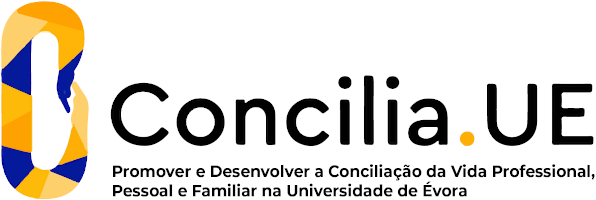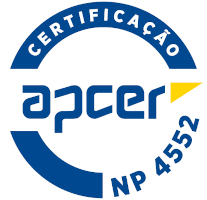2025
Health and Physical Condition
Name: Health and Physical Condition
Code: DES14901L
3 ECTS
Duration: 15 weeks/78 hours
Scientific Area:
Human Kinetics
Teaching languages: Portuguese
Languages of tutoring support: Portuguese, English
Regime de Frequência: Presencial
Sustainable Development Goals
Learning Goals
1. Explain the pathophysiology of common chronic diseases and their links to physical inactivity
2. Describe the benefits and risks associated with different forms and intensities of exercise
3. Summarize the principles for exercise assessment and prescription for healthy populations, those with diseases, and the elderly
4. Differentiate between preliminary health assessments and risk stratification procedures
5. Utilize assessment tools to evaluate the physical and functional condition of diverse populations
6. Design effective and safe physical exercise programs for healthy individuals, those with diseases, and the elderly
7. Assess clinical cases and prescribe tailored exercise programs based on individual needs and medical conditions.
2. Describe the benefits and risks associated with different forms and intensities of exercise
3. Summarize the principles for exercise assessment and prescription for healthy populations, those with diseases, and the elderly
4. Differentiate between preliminary health assessments and risk stratification procedures
5. Utilize assessment tools to evaluate the physical and functional condition of diverse populations
6. Design effective and safe physical exercise programs for healthy individuals, those with diseases, and the elderly
7. Assess clinical cases and prescribe tailored exercise programs based on individual needs and medical conditions.
Contents
1. Pathophysiology of Chronic Diseases
2. Benefits and Risks Associated with Physical Exercise
3. Preliminary Health Assessments and Risk Stratification
4. Principles for Exercise Assessment and Prescription
a. Healthy population
b. Population with diseases
c. Elderly population
5. Assessment of Physical and Functional Condition
a. Healthy population
b. Population with diseases
c. Elderly population
6. Physical Exercise Programs Design
a. Healthy population
b. Population with diseases
c. Elderly population
7. Exercise Prescription for Clinical Cases
2. Benefits and Risks Associated with Physical Exercise
3. Preliminary Health Assessments and Risk Stratification
4. Principles for Exercise Assessment and Prescription
a. Healthy population
b. Population with diseases
c. Elderly population
5. Assessment of Physical and Functional Condition
a. Healthy population
b. Population with diseases
c. Elderly population
6. Physical Exercise Programs Design
a. Healthy population
b. Population with diseases
c. Elderly population
7. Exercise Prescription for Clinical Cases
Teaching Methods
Teaching methodologies for this unit include:
1. Encourage students to explore real-life health issues and exercise-related challenges, promoting active learning and problem-solving skills
2. Fosters a student-centered environment by engaging students in discussions about the health and physical condition topics
3. Promotes collaborative teamwork, critical thinking, and communication skills as students work together on projects related to exercise program design, aligning with disciplinary and transversal skill development
4. Integrates teaching and research by assigning projects that require students to delve into current research on exercise, health, and chronic diseases
5. Provides opportunities for students to interact with medical experts, fostering internationalization of training experiences
6. Involves students in community-based health initiatives, encouraging practical application of their knowledge and skills in simulated real-case scenarios.
1. Encourage students to explore real-life health issues and exercise-related challenges, promoting active learning and problem-solving skills
2. Fosters a student-centered environment by engaging students in discussions about the health and physical condition topics
3. Promotes collaborative teamwork, critical thinking, and communication skills as students work together on projects related to exercise program design, aligning with disciplinary and transversal skill development
4. Integrates teaching and research by assigning projects that require students to delve into current research on exercise, health, and chronic diseases
5. Provides opportunities for students to interact with medical experts, fostering internationalization of training experiences
6. Involves students in community-based health initiatives, encouraging practical application of their knowledge and skills in simulated real-case scenarios.
Assessment
To pass the continuous assessment, the student must obtain a final grade equal to or greater than 9.5 in the weighted sum of the proposed assessment tasks. Continuous assessment comprises 3 theoretical-practical assessments in working groups, with the presentation of the clinical case or healthy client, risk stratification, preliminary assessments and the design of the prescription for the initial phase of the exercise program (learning objectives 3, 4, 5, 6 and 7 - 20% quote each time). The continuous assessment also includes two individual written tests on pathophysiological processes and theoretical constructs for exercise prescription (learning objectives 1, 2 and 3 - 20% mark). Assessment by examination and appeal includes carrying out an individual written test on the pathophysiological processes, the theoretical constructs for exercise prescription and the design of the initial phase of an exercise program for the clinical case or hypothetical client.
Teaching Staff
- Cláudia Sofia Orvalho Mendes
- Jorge Duarte dos Santos Bravo [responsible]





















